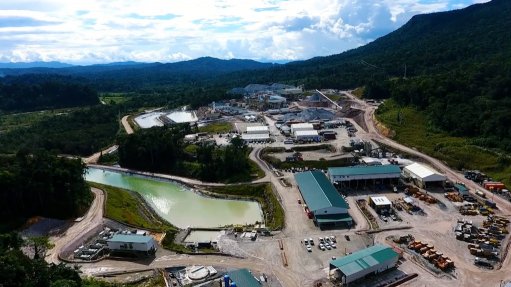PDAC calls for renewal of the Mineral Exploration Tax Credit to sustain capital flows for exploration


PDAC executive director Ross Gallinger says the Canadian mining industry has fallen into survival mode
The current challenges facing the resources industry, coupled with the difficulty of raising capital, reinforce the importance of extending the Mineral Exploration Tax Credit (METC), which will expire at the end of March.
According to the Prospectors and Developers Association of Canada (PDAC), the METC has helped the country become the top global destination for mineral exploration since its inception in 2000, and its renewal will help sustain capital flows for exploration.
PDAC executive director Ross Gallinger tells Mining Weekly the Canadian mining industry has fallen into survival mode and that key performance indicators for the sector are not painting a rosy outlook.
It is the junior mining sector that is hardest hit. The number of junior financings in 2013 fell by about 25% from 2012 levels, reaching the lowest level in 15 years. He says roughly 400 junior mining companies have less than $50 000 in working capital.
“The junior sector is trying to survive in a market that has shifted away from investing in grassroots exploration,” says Gallinger, adding that expenditure on grassroots exploration – which is crucial for the future of the country’s mining industry – has decreased by about 50%. Exploration spending remains strong for advanced and near-mine projects.
The METC and Canada’s flow-through shares system only apply to grassroots exploration expenditures that junior companies undertake and act as an investment incentive. Flow-through shares are a type of common share that permits the initial investor to claim a deduction up to the amount of the share subscription price against any income in respect to resource expenses renounced by a publicly traded issuer. The METC exists on top of that deduction, offering an additional 15% credit as an incentive to fund exploration activities.
The PDAC also believes that a targeted METC for northern and remote regions should be introduced as projects in these regions could face costs that are several times higher than activities in southern Canada, and are therefore a harder sell to investors. The organisation proposes a targeted METC of 25%, instead of 15%, to attract investors to these projects.
It further says a $500-million venture capital fund for grassroots exploration will also help to sustain exploration in the country.
Gallinger reports that the PDAC’s securities and finance committees have been networking with the sector to examine options for raising capital and to come up with ideas to help companies respond to the difficulties of raising money.
At the PDAC 2014 Convention, there will be a number of sessions to discuss and examine how to leverage current funds and look for new possible options. “Firms should be using the convention as a means of rapidly accessing innovation, discussing further options and sharing best practices,” notes Gallinger.
Although exploration growth will be limited while there is a lack of capital, he says there is scope for “exciting” new discoveries in Canada through government-sponsored geoscience and mapping programmes.
The Geomapping for Energy and Minerals programme creates a common knowledge base for industry that defines regions of greatest potential for long-term develop- ment. Junior exploration companies can operate more efficiently by focusing their resources on areas with greater potential for mineral discovery and conversion to mining operations.
The Targeted Geoscience Initiative (TGI) is a collaborative federal geoscience programme to generate new geoscience knowledge in support of deep exploration. The TGI help leads to the development of new geoscience-based techniques to assist companies to focus on areas of buried mineral deposits. The federal government has invested $25-million over five years in the TGI programme and Gallinger says renewing the programme in 2014 will be an additional support for the industry.
Canada has nearly 1 700 mining and junior mining companies listed on the TSX and TSX-V. Together, they are responsible for about 90% of the world’s equity financing by number and nearly 40% by value.
Comments
Press Office
Announcements
What's On
Subscribe to improve your user experience...
Option 1 (equivalent of R125 a month):
Receive a weekly copy of Creamer Media's Engineering News & Mining Weekly magazine
(print copy for those in South Africa and e-magazine for those outside of South Africa)
Receive daily email newsletters
Access to full search results
Access archive of magazine back copies
Access to Projects in Progress
Access to ONE Research Report of your choice in PDF format
Option 2 (equivalent of R375 a month):
All benefits from Option 1
PLUS
Access to Creamer Media's Research Channel Africa for ALL Research Reports, in PDF format, on various industrial and mining sectors
including Electricity; Water; Energy Transition; Hydrogen; Roads, Rail and Ports; Coal; Gold; Platinum; Battery Metals; etc.
Already a subscriber?
Forgotten your password?
Receive weekly copy of Creamer Media's Engineering News & Mining Weekly magazine (print copy for those in South Africa and e-magazine for those outside of South Africa)
➕
Recieve daily email newsletters
➕
Access to full search results
➕
Access archive of magazine back copies
➕
Access to Projects in Progress
➕
Access to ONE Research Report of your choice in PDF format
RESEARCH CHANNEL AFRICA
R4500 (equivalent of R375 a month)
SUBSCRIBEAll benefits from Option 1
➕
Access to Creamer Media's Research Channel Africa for ALL Research Reports on various industrial and mining sectors, in PDF format, including on:
Electricity
➕
Water
➕
Energy Transition
➕
Hydrogen
➕
Roads, Rail and Ports
➕
Coal
➕
Gold
➕
Platinum
➕
Battery Metals
➕
etc.
Receive all benefits from Option 1 or Option 2 delivered to numerous people at your company
➕
Multiple User names and Passwords for simultaneous log-ins
➕
Intranet integration access to all in your organisation



















